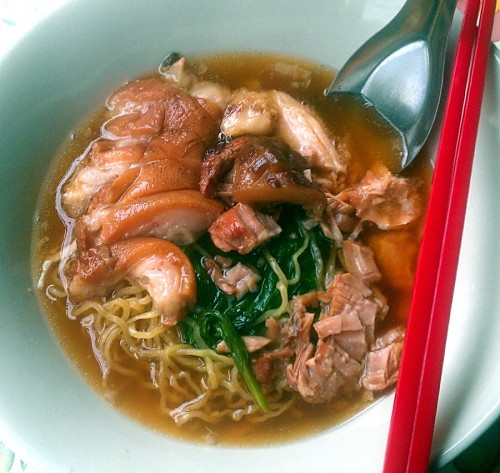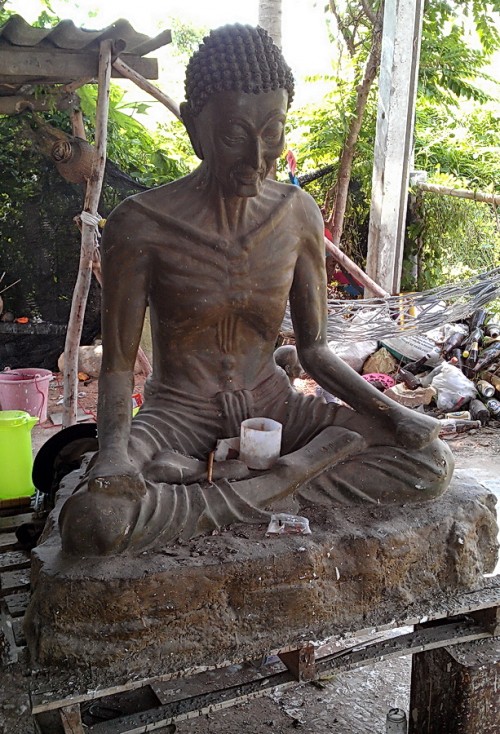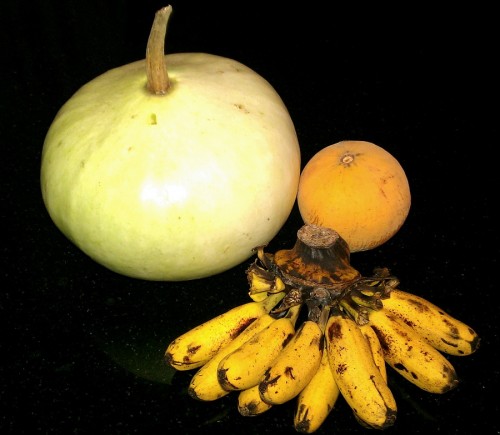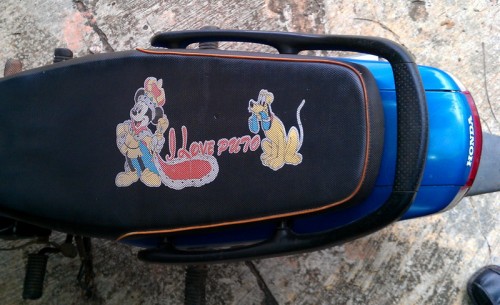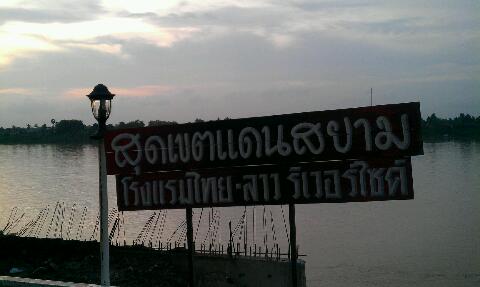Nirvana: Achieved. (@ Nong Khai, a couple forgotten streets down from the unremarkable riverside marketplace, across from a nondescript temple in a truly magical noodle shop)
Category: Thai Society/Culture
Nok Krata (Thai Jungle Quail)
Note: The words “Thai” and “Jungle” were included as descriptors in the title and are probably not part of their real name (which eludes my lazy Googling at this point in time). Rather, I found them for sale at a roadside market stall surrounded by dense Thai jungle in a town called Koi Mek, in Kalasin province, on my way home from Nong Khai a couple months ago.
They were about 60 baht (less than $2) a piece, and the old lady who sold them to me said they were caught that morning. I took the birds and chased Max and Mina around with them, then gave them to our nanny to have her older sister cook at home. The next day, she brought a Thai basil stir fry prepared in my least favorite way – chopped in small pieces, bones and all – which was still mighty tasty if not entirely edible.
Oh my gac!
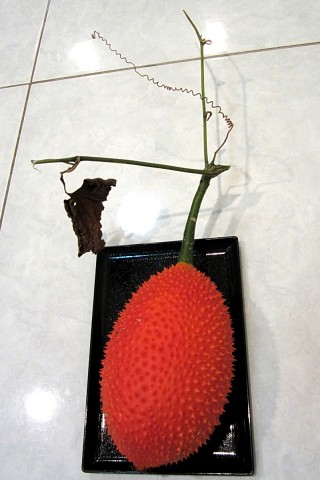
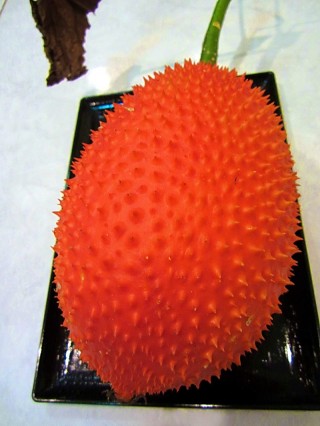
This majestic fruit is perhaps my favorite in the entire kingdom of Thailand:
- Not just because it’s reminiscent of a freshly-used morning star worthy of Chuck Norris, Jack Bauer, or even Double Hanuman.
- Not only because it’s rare in most of Thailand, and normally eaten while still pale yellow, making perfectly ripe bright red ones basically unavailable at nearby markets.
- And not just because it’s filled with by far the highest content of beta-carotene (vitamin A) of any known fruit or vegetable and up to 70 times the amount of lycopene found in tomatoes.
In fact, the main reason I love this obscure fruit is its Thai name: It is romanized as “fak kao,” or, “fak khao,” but the truth of the matter is that it’s pronounced more or less as “FUCK COW.”
I shit you not.
The first time I saw one of these bad boys was on a tour of a fruit orchard in Chonburi during our epic 2007 Road Trip. The tour guide spotted a bright red globe in the bushes and said it was a FUCK COW. I laughed and made sure to research it further, but it was a long time before I saw one again. Once in a while, I saw locals in Sarakham carrying around these anemic-looking ones that were a waxy pale yellow, but it never occurred to me they were the same fruit. One day I asked a friend who had a couple what they were and she said FUCK COW. Suddenly excited to have been united with my favorite fruit (that was my favorite based on name alone, I’d still never tried one), I asked all about them: Where do they grow? Aren’t they usually red? Are they yummy?
But nobody knew about them, really. The general consensus was that you cooked the flesh in a pot of rice, and that it didn’t really taste like much… It was like the world was conspiring against my ever actually sampling FUCK COW.
Then, two weeks ago, one of Nam’s teachers brought some from her parent’s home in Ubon, and I had two healthy specimens on my kitchen counter – the fruit I had waited to taste for five whole years was going under my knife. I took a couple hurried photos on the floor and cut one open. Against Nam’s advice, I dug out a flesh-encapsulated seed and tried it raw – Ahhhhh…. It was, um, OK I guess. Slightly tart, with no real remarkable flavor. Like a very bland passion fruit with a hint of copper, perhaps. Talk about anticlimax.
We also tried it cooked in a pot of rice. It turned the rice bright orange, but basically tasted unremarkable. Not bad, just not remarkable at all. the kids were disappointed since the color of the rice hinted at least at a fruity taste, but no…. All bang, no bite.
So why is this still my favorite fruit, you might ask. Two words: FUCK. COW.
Unknown Thai Melon
Pictured above from the upper left: An unknown Thai melon, a katon (aka kraton, kraton priya, krathon wild mangosteen, santol, or sandorica. Scientific names: Sandoricum koetjape, Sandoricum indicum, Sandoricum nervosum or Melia koetjape. Family Meliaceae, Order Sapindales. Source.) somebody at work gave me, and an unknown species of banana that were selling for 20 baht/bunch at a local market.
The bananas were good but not exceptional, the katon got spoiled before I could eat it (I never seem to get sweet ones; people around here tend to eat it in a savory/spicy fruit salad), and I did what we do with all unknown melons* – tried a bit to see if it was a sweet variety. When it proved to be a non-sweet variety, we used half for pork rib soup and half in a red curry. It was the bomb!
*Let me clarify: We don’t eat stuff that might not be safe. It’s not unknown because we have no idea about it, but because our housekeeper gave it to us and told us the name, but we promptly forgot it. Now our housekeeper is recovering from surgery at home, so the name of the melon will remain unknown until such time as she recovers, returns to work, and I can remember to ask her about it.
Loving Puto
Would that be pinche puto, or Filipino steamed bun?
An Oasis of Serious in the Land of Smiles
There was a huge meeting for the UDD today at the main hall of our university. A pal suggested we check it out, and we did just before lunch. We made it inside the auditorium and back out again just fine, but it felt like walking through the wrong part of town, you know? People were STARING at us big time. Felt like John McClane walking through Harlem or something.
My new favorite Thai band
Actually, I never had one before. This is Jui Juis:

